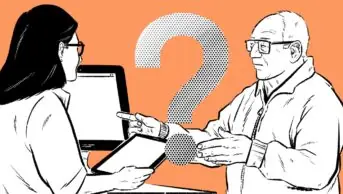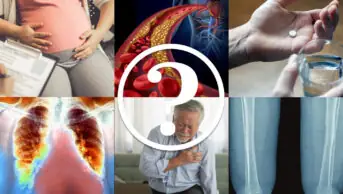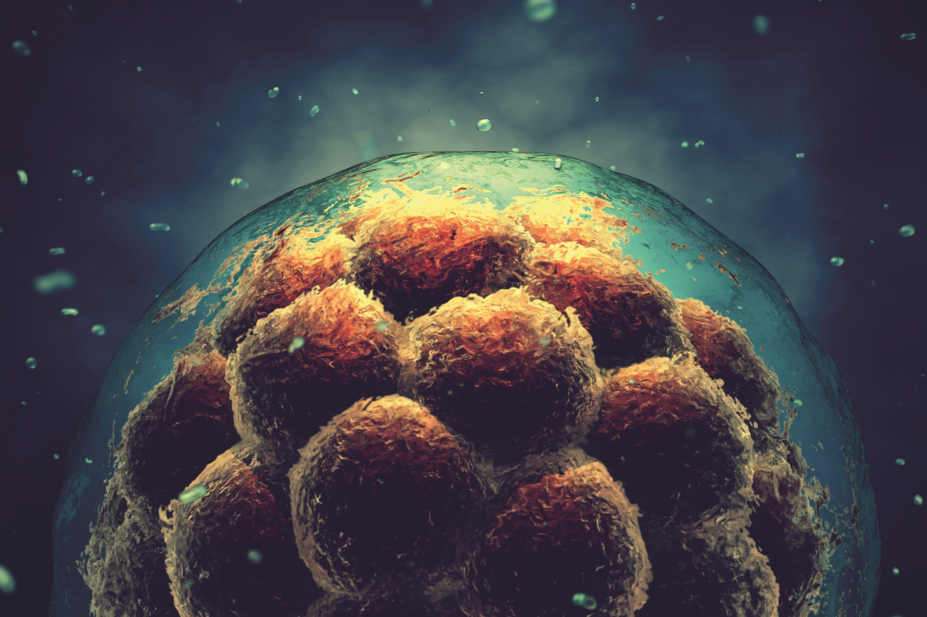
Shutterstock.com
In a business park next to a motorway in Bridgend, South Wales, tucked between a petrol station and a fast-food restaurant, is a nondescript office building. Inside that building, John Sinden, the chief scientific officer at stem-cell company ReNeuron, is showing me something extraordinary. It’s a time-lapse recording of the company’s neural stem cells. Four days of their lives sped up to fit in a two-minute clip. At this speed their actions are unmistakable. “We don’t know how they’re doing it,” says Sinden, “but we think they are looking for each other.”
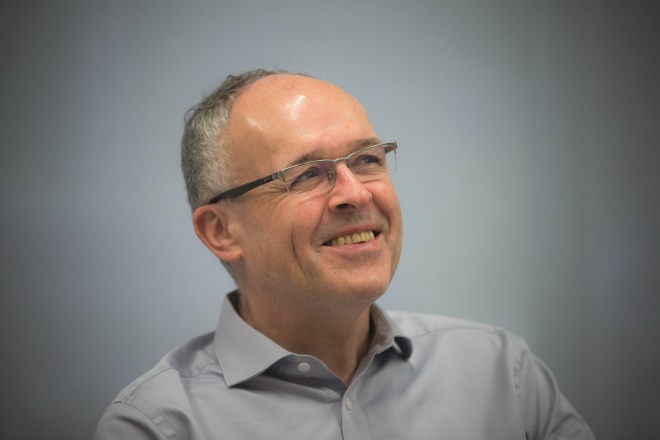
Source: ReNeuron
John Sinden, chief scientific officer at stem-cell company ReNeuron, says that evidence of a treatment effect in the phase II trial justifies the move to a phase III trial, which is what the field needs
The cells are groping around the petri dish, extending finger-like processes to find each other. When they do, they pull themselves together until, around a minute into the video, they’ve formed large, chattering crowds, glowing white in the middle. “They seem to like contact and when they get it they seem to divide — you can see them divide when they go bright,” he says. “It’s at this point that we usually take them out.” Once out, the cells are put through rigorous testing, are amplified further and are vialled up and stored in large cryogenic freezers at the back of the building ready for shipment to testing centres.
Sinden and his colleagues have big plans for these cells. Stem cells can differentiate into specialised cell types and might thus work as a treatment to restore the damage to brain tissue caused by stroke. Each year, more than 150,000 people in the UK have a stroke: 1 in 8 die within the first 30 days; 1 in 4 die within a year. Around 80% of strokes are ischaemic, caused by a blockage that deprives brain tissue of blood and oxygen. The rest are haemorrhagic, in which a weakened blood vessel bursts and causes bleeding within the brain. Half of people who survive a stroke are left with disabilities that affect their movement, their ability to talk or their ability to think (see Table 1). There are 1.2 million stroke survivors living in the UK today.
| Difficulty | % of people affected |
|---|---|
| Source: Stroke Association. State of the nation: stroke statistics; January 2016 | |
| Upper limb/arm weakness | 77 |
| Lower limb/leg weakness | 72 |
| Visual problems | 60 |
| Facial weakness | 54 |
| Slurred speech | 50 |
| Bladder control | 50 |
| Swallowing | 45 |
| Aphasia (a language disorder that can affect speech, comprehension and reading and writing skills) | 33 |
| Depression | 33 |
| Bowel control | 33 |
| Dementia | 30 |
| Inattention/neglect | 28 |
| Emotionalism (a tendency to regard things emotionally) within six months | 20 |
| Emotionalism post-six months | 10 |
Other than thrombolysis — treatment with drugs such as tissue plasminogen activator to dissolve blood clots — surgical clot removal and management of harmful brain swelling immediately after a stroke occurs, there are few options for patients. Most recovery happens over the first six months, and can be helped with physiotherapy and speech and language therapy, but after that point patients and their families must learn to live with lifelong disabilities.
This is where the potential of stem cells such as ReNeuron’s come in. Several biotechnology companies are investigating whether stem cells can restore brain tissue and perhaps even reverse disability when given in the months after a stroke. They could even be used to prevent the damaging effects of a stroke if given soon after it strikes. Much work, though, is left to do to overturn historic concerns about the use of these cells in people and to show that they can be effective.
There’s a lot of hype around stem cells for stroke but it’s important to be circumspect about it all, it’s still very much experimental and there’s a lot left to figure out
Jack Price is a developmental biologist at King’s College London and an adviser to ReNeuron having helped develop its stem cell technology. “There’s a lot of hype around stem cells for stroke but it’s important to be circumspect about it all, it’s still very much experimental and there’s a lot left to figure out,” he says. Most work, he says, is in treating the disability caused by ischaemic stroke given the large number of patients affected. “Saying that, this year ReNeuron and other companies have been making solid progress and hopefully we’ll make a substantial step forward soon.”
PISCES trial
In August 2016, Sinden and colleagues published the two-year follow-up from PISCES 1, a phase I, first-in-man study of their human foetal-derived neural stem-cell line product CTX-DP[1]
. All 11 participants were men aged 60 years or over and had had stable disability at 6–60 months after ischaemic stroke. Participants received a single intracerebral dose of up to 20 million cells and none had serious adverse events, meaning the trial, as a phase I, met its primary endpoint of safety. The outcome findings, which were secondary endpoints, showed improved neurological function, with a mean improvement in participants’ National Institutes of Health Stroke Scale (NIHSS) score, a measure of stroke severity, of two points. “That’s an improvement that we wouldn’t otherwise have expected so long after having a stroke,” says Sinden.
In December 2016, ReNeuron announced findings from an open-label phase II trial of their cells in 21 patients, men and women, recruited between 2 months and 13 months after their ischaemic stroke. The trial did not meet its primary endpoint, which was for at least two patients to reach a minimum two-point improvement in a grasping and lifting test within 3 months of surgery. Only one patient had such improvement within the timeframe, but there were some signs that left Sinden feeling encouraged.
The key thing is that we’ve got what we want: some evidence of a treatment effect that we believe will be important for patients
Two other patients achieved a two-point improvement, one by 6 months and one by 12 months. “What I’m most pleased with is the improvement in other endpoints,” says Sinden. Seven of the 21 patients had clinically significant improvements in the Modified Rankin Scale (a measure of disability and dependence) and eight patients had an improvement in the Barthel index (a measure of performance in activities of daily living). “The key thing is that we’ve got what we want: some evidence of a treatment effect that we believe will be important for patients. We now have the justification to move into a proper randomised controlled trial because that’s what the field clearly needs.”
Without randomised, placebo-controlled trials, he says, little can be learnt about the effectiveness of stem cell treatment. The one patient who had a two-point improvement in the primary endpoint measurement had it within six months of having a stroke so, although unlikely, their improvement could have happened as part of their natural recovery. The company is in discussions with regulators in the United States and Europe and hopes to begin a randomised, placebo controlled phase II trial by 2018.
Dramatic results
ReNeuron’s stem cells will not be the first to enter randomised clinical testing for stroke. On the back of encouraging phase I/IIa findings[2]
in 18 patients within 6 months and 3 years of ischaemic stroke published in July 2016, US researchers have begun a phase IIb study that will randomise 156 ischaemic stroke patients to receive either intracranial injection with a placebo or with the experimental SB623 cells, which are expanded from adult marrow stromal cells and developed by Californian company SanBio.
Gary Steinberg, a clinician-researcher at Stanford University in California, led the phase I/IIa study and is leading the larger, multicentre phase IIb study, which is recruiting patients 6 months to 5 years after an ischaemic stroke. He stresses that the first study was too small to draw definitive conclusions about the effectiveness of SanBio’s cells, but says that the motor function improvements they saw, especially the two-point NIHSS score improvement, were impressive.
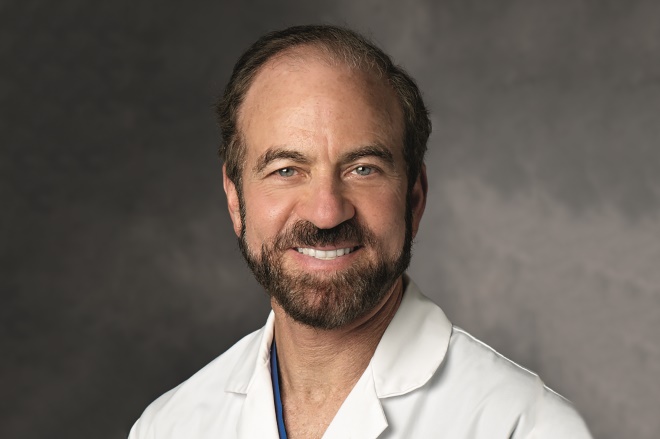
Source: Stanford University
Gary Steinberg, a clinician-researcher at Stanford University in California, says that brain cells and neural circuits are not dead after a stroke and we need to figure out how to resurrect them
“We had some very dramatic results picked up by the media and videotaped,” says Steinberg. He gives examples – one a 71-year-old woman, two years after her stroke, who was wheelchair-bound and couldn’t move her arm except for her thumb. “After surgery, she was walking and holding her arm above her head,” he says. Another was a 33-year-old woman who had severe difficulty in walking and who had problems with her speech — she has since got married, walked down the aisle herself and has given birth to her first child.
It’s basically changed the notion of what happens after a stroke and how permanent the damage is
“It was a real surprise,” says Steinberg. “It’s basically changed the notion of what happens after a stroke and how permanent the damage is. The brain cells and the neural circuits are obviously not dead. Now we need to figure out how to resurrect them.”
How the cells might be working
“We’ve learned a lot over the past five or so years,” says Price of efforts to understand how stem cells have shown benefit in animal models of stroke. “When we started out we thought the cells would just go in and replace the cells lost in stroke; that they would turn into the neurons and astrocytes and oligodendrocytes and so on to help the brain heal. They do seem to help so it turns out we were right, but for completely the wrong reasons.”
In a sense, we think they are turning the adult brain into an infant brain which recovers well after stroke or other types of injury
Studies in animals, says Price, have shown that the stem cells don’t stay around for long, maybe for one or two months[3]
. Instead, long-term benefits seen in animals seem to be because of proteins the cells secrete. “The cells pump out very powerful trophic factors,” says Steinberg, “growth factors, molecules, proteins, and angiogenesis factors that promote native recovery. In a sense, we think they are turning the adult brain into an infant brain which recovers well after stroke or other types of injury.”
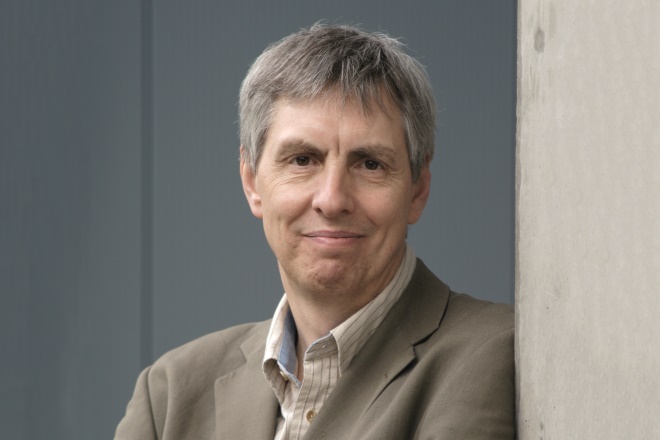
Source: Courtesy of Jack Price
Jack Price, a developmental biologist at King’s College London and adviser to ReNeuron, says animal studies show that stem cells only stay around for a couple of months and long-term benefits seem to be because of proteins the cells secrete
Can researchers not extract these factors and use them as a treatment? “Not right now,” Steinberg says. “Right now, the cells are smarter than us. There seems to be some sort of cross talk between them and the site of injury that figures out what’s needed.” There is more left to learn. “We don’t know what type of cells are best to use, is it neural cells originally derived from brain tissue or from bone marrow tissue or skin or adipose tissue? We don’t even know if it is best to derive cells from embryonic cells or foetal cells or adult cells. The best time to treat is also unknown.”
Although the exact timings are yet to be established, both SanBio and ReNeuron have broadly opted to treat in the chronic phase, at least six months after stroke. “The reason we kept away from the acute phase is that immediately following a stroke the brain is a real battleground,” says Price. “There is massive inflammation, there’s invasion of the lymphocytes and other immune cells, the blood-brain barrier is breached. It’s a mess. Frankly, we didn’t think our cells would survive.”
Where others fear to tread
However, US stem-cell company Athersys, based in Cleveland, Ohio, has decided to go in early, using stem cells not to treat the disability caused by stroke but to stop much of the damage happening in the first place. “The clinical reality in stroke is that time is brain,” says Gil Van Bokkelen, Athersys’s chief executive officer. The cells that comprise the company’s treatments, called MultiStem, are bone marrow-derived multipotent adherent progenitor cells. They are given intravenously rather than intracranially like the others. It makes them easier to administer, says Van Bokkelen, but also if they’re administered soon after a stroke has happened the cells might not even need to cross into the brain.
“One of the things we’ve learnt over the years is that our cells hone to sites of tissue damage, inflammation and injury,” he says. “They also go to organ systems involved in the body’s response to stroke. One really important organ that we understand our cells to be attracted to is the spleen.”
The immune cells think your body is under attack and cause the permanent loss of brain tissue that could otherwise be saved
The injury caused by a stroke activates a powerful signalling cascade that triggers the spleen, a warehouse for immune cells, into action. “Most of the time you have T cells and macrophages and other immune cells sitting there waiting for a signal that you hope never gets sent,” says Van Bokkelen. In the first day or two after a stroke, immune cells in the spleen are activated, enter the circulatory system and kick off a massive hyperinflammatory response that kills more brain cells and increases the damage. “The immune cells think your body is under attack and cause the permanent loss of brain tissue that could otherwise be saved.”
In animal experiments, Van Bokkelen and colleagues have seen that when given soon after a stroke, their stem cells migrate to the spleen and neutralise the hyperinflammatory response before it is unleashed[4]
. The cells also seem to upregulate other healing and repair mechanisms in the body, Van Bokkelen says of pre-clinical work conducted in his company’s laboratories[5]
.
Athersys has tested MultiStem in people, too. In February 2016, at the International Stroke Conference in Los Angeles, California, the company announced the promising one-year results of a double-blind, randomised, placebo-controlled phase II clinical study in ischaemic stroke. Of participants given the MultiStem treatment (65 patients), 23.1% achieved so-called “excellent outcomes” compared with 8.2% of those given placebo (61 patients). Of those who were given MultiStem treatment within 36 hours of their stroke (31 patients), 29.0% achieved “excellent outcomes”, defined clinically as attaining a modified Rankin Scale outcome, an NIHSS score of 0–1 and a Barthel index score of 95 or greater (out of 100), and indicative of impressive recovery in all aspects.
“That 36-hour window is important because it’s a realistic time frame within which patients can get to a hospital,” says Van Bokkelen. “We think that after the 36 hours it might be too late because the spleen has already launched the hyperinflammatory cascade.”
In September 2016, Athersys received approval for a Special Protocol Assessment from the US Food and Drug Administration for a phase III study that it hopes to start in mid-2017. It will be a randomised, double-blind, placebo controlled trial of 300 patients with ischaemic stroke in North America and Europe. Athersys has also received authorisation for another randomised, placebo controlled phase III trial of 220 patients with ischaemic stroke in Japan, which is expected to begin in early 2017.
Concerns and opportunities
A much-discussed risk of stem cell treatments is cancer — put cells with an unlimited ability to proliferate into the body and they might grow into a tumour[6]
. ReNeuron’s cells, for instance, have been transfected with the onco-gene c-myc, which give the cells the ability to reproduce in a rapid and reliable way. UK regulators, says Price, “got [ReNeuron] to do every assay you could imagine. We spent a lot of time showing once this gene was turned off, which is when the cells are put in the brain, that it can’t be turned back on again.” Steinberg and Van Bokkelen have also been put through a similarly rigorous gauntlet by US regulators who were happy for them to have begun testing in people.
Yes, there’s a theoretical risk of cancer but none of the phase I studies [of stem cells for stroke] has shown any indication that it is a real one
Pippa Tyrrell is the chair in stroke medicine at the University of Manchester and has previously participated in the development of stroke guidelines for England’s drug regulator the National Institute for Health and Care Excellence. “Yes, there’s a theoretical risk of cancer but none of the phase I studies [of stem cells for stroke] has shown any indication that it is a real one,” she says, adding that researchers should remain vigilant of the risk.
Another issue is whether these treatments could work in patients who have had a haemorrhagic stroke. All human trials done so far have been in the more-common ischaemic stroke, which researchers understand better than haemorrhagic stroke and which offers a bigger market for return on a company’s investment in developing treatments.
There’s no reason to believe that, once licenced for ischaemic stroke, these treatments can’t be used in haemorrhagic stroke, says Michael Chopp, a researcher in stroke treatments at Henry Ford Hospital in Michigan. Cell-based therapies, he says, aid neurological recovery by stimulating endogenous restorative processes, such as angiogenesis (the making of new blood vessels), neurogenesis (new neurons), synaptogenesis (new electrical connections) and axonal outgrowth (new wiring), and by modulating the inflammatory response to injury.
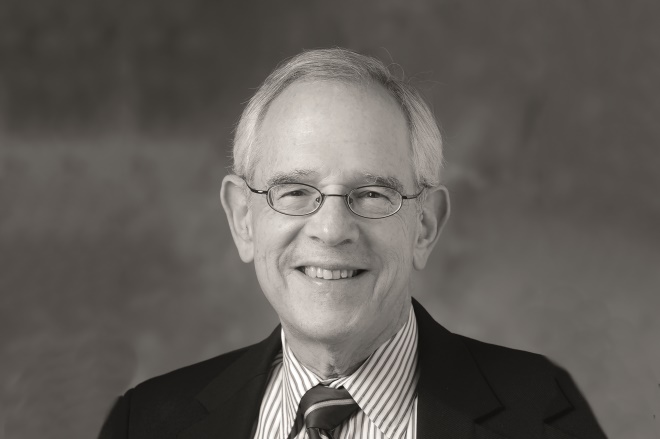
Source: Henry Ford Hospital
Michael Chopp, a researcher in stroke treatments at Henry Ford Hospital in Michigan, says that cell-based treatments have shown promise in animal models of haemorrhagic stroke
“Independent of the type of stroke, or even whether it’s a traumatic brain injury, if the therapies are treating the remaining tissue they might still promote recovery,” he says, adding that cell-based treatments have shown promise in animal models of haemorrhagic stroke[7]
.
What are we hoping for?
Even in ischaemic stroke, nobody knows what sort of recovery, if any, stem cell treatment might achieve. “Without big, placebo-controlled studies we know nothing,” says Tyrrell. “There is a huge placebo effect of having an operation and having so much interest taken in you.” Although she emphasises that she’s not putting a dampener on expectation. “I think we need to be very excited about these studies.”
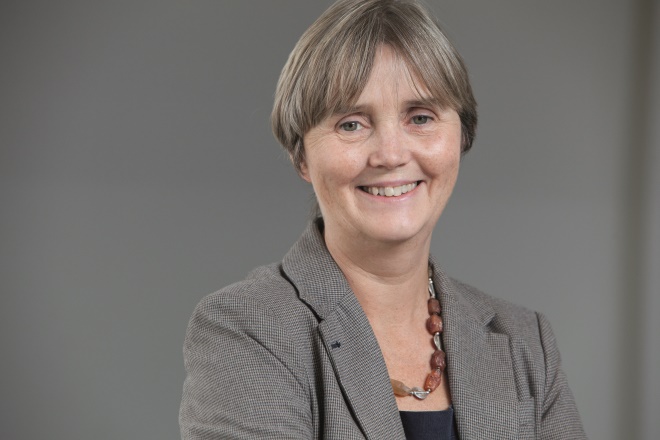
Source: Stroke Association
Pippa Tyrrell, chair in stroke medicine at the University of Manchester, says she thinks the use of stem cells for stroke is the beginning of a new phase of neuroscience
We’ve not been able to offer anything to these people but maybe one day we can. It’s the beginning of a big new phase of neuroscience, I think
In the 25 years that Tyrrell has been a stroke specialist, the ability to stop people dying from stroke has improved tremendously. “But we’re still left with people who are severely disabled, unable to speak, unable to walk,” she says. “We’ve not been able to offer anything to these people but maybe one day we can. It’s the beginning of a big new phase of neuroscience, I think.”
In the future, says Price, new technologies, such as induced pluripotent stem cells, will likely supersede current stem cell technologies. “They might be able to fulfil the original promise of stem cells and directly rebuild that lost tissue,” he says. “But if you think that in stroke you normally lose a chunk of brain the size of a golf ball that’s a lot of new cells to build. It’s a big ask.” All talk of the potential of stem cells is conjecture, though, until the current battery of trials is complete.
“We believe we might be on the cusp of redefining stroke medicine as we know it,” says Van Bokkelen of all stem cell researchers’ work. “It’s a tough challenge but one that none of us has shied away from. If we can just nudge that needle in terms of demonstrating in a robust way that cell therapy can have an impact in stroke, frankly, it would be a huge achievement. We’re rooting for companies that are focused on trying to improve care for chronic stroke victims, just as I hope they are rooting for us.”
References
[1] Kalladka D, Sinden J, Pollock K et al. Human neural stem cells in patients with chronic ischaemic stroke (PISCES): a phase 1, first-in-man study. Lancet 2016;388:787–796. doi: 10.1016/S0140-6736(16)30513-X
[2] Steinberg GK, Kondziolka D, Wechsler LR et al. Clinical outcomes of transplanted modified bone marrow-derived mesenchymal stem cells in stroke: a phase 1/2a study. Stroke 2016;47:1817–1824. doi: 10.1161/STROKEAHA.116.012995
[3] Smith EJ, Stroemer RP, Gorenkova N et al. Implantation site and lesion topology determine efficacy of a human neural stem cell line in a rat model of chronic stroke. Stem Cells 2012;30:785–796. doi: 10.1002/stem.1024
[4] Jacobs SA, Pinxteren J, Roobrouck VD et al. Human multipotent adult progenitor cells are nonimmunogenic and exert potent immunomodulatory effects on alloreactive T-cell responses. Cell Transplant 2013;22:1915–1928. doi: 10.3727/096368912X657369
[5] Yasuhara T, Hara K, Maki M et al. Intravenous grafts recapitulate the neurorestoration afforded by intracerebrally delivered multipotent adult progenitor cells in neonatal hypoxic-ischemic rats. J Cereb Blood Flow Metab 2008;28:1804–1810. doi: 10.1038/jcbfm.2008.68
[6] Herberts CA, Kwa MSG & Hermsen HPH. Risk factors in the development of stem cell therapy. J Transl Med 2011;9:29. doi: 10.1186/1479-5876-9-29
[7] Rosado-de-Castro PH, Gonçalves de Carvalho F, Rodriguez de Freitas G et al. Review of preclinical and clinical studies of bone marrow-derived cell therapies for intracerebral hemorrhage. Stem Cells Int 2016;4617983. doi: 10.1155/2016/4617983
